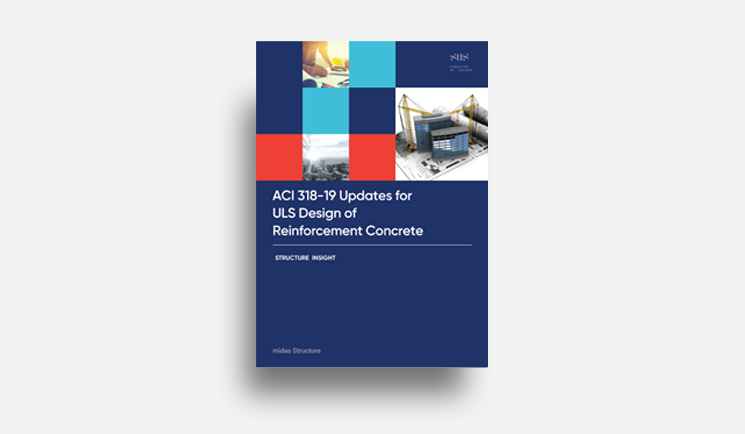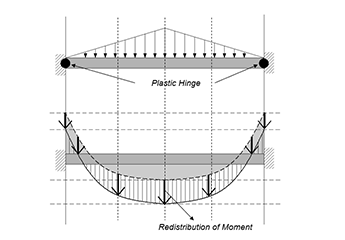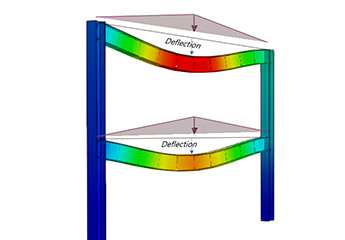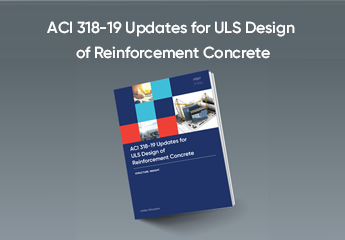Definition of Direct Analysis & Application by program
Introduce for the Stability Design of steel structure
Most of the design codes consider all of the following regarding the stability of steel structures and their elements.
(1) Deflection of flexural, shear, and axial members & all other deformations affecting the displacement of the structure
(2) Secondary effect (P-Δ, P-δ)
(3) Geometric imperfections
(4) Stiffness decrease due to inelasticity
(5) Uncertainty of stiffness and strength
The method to design the stability of the structure by reflecting the above requirements is as follows.
- Direct Analysis Method (DA)
- Effective Length Method (ELM)
- Primary Analysis Method

Considerations in Direct Analysis
The direct analysis is a newly developed stability design method that recognizes the limitations of ELM in the design of increasingly complex steel structures and is an analysis method that can be used regardless of the structure type.
IIn 2nd analysis, the virtual minimum lateral load, Ni should be included in all gravity load combinations and applied to each floor of the structure.
.There is also a method of directly modeling the initial deformation instead of applying a virtual lateral load.
IIn case of Δ2nd/Δ1st ≤ 1.5, the virtual lateral load is applied only to the gravity load combinations. If this is exceeded, a virtual lateral load is to be added to all load combinations.
IIt is analyzed by reducing the stiffness of all members considering the stiffness uncertainty.
- EI = 0.8*τb*EI (for flexural stiffness)
Because the direct analysis method reflects the structural uncertainty that affects stability in the analysis model,
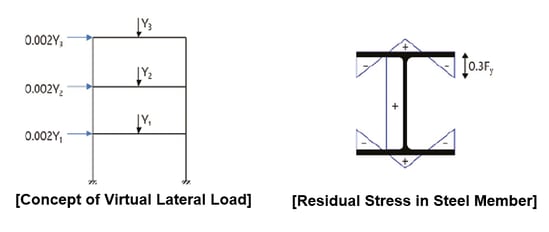 Figure 2. Concepts for application of direct analysis
Figure 2. Concepts for application of direct analysisWhat is a secondary effect?
The effect caused by the displacement, δ occurring inside the member is usually called P-δ, and the one caused by the lateral displacement of the frame, Δ is called the P-Δ effect.
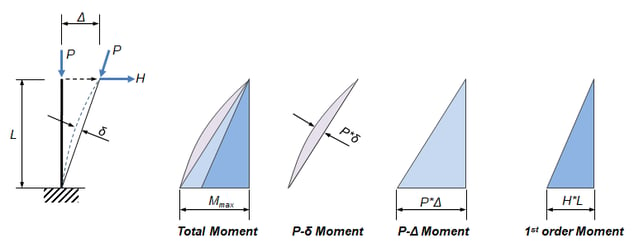 Figure 3. P-δ, P-Δ effects of cantilever columns
Figure 3. P-δ, P-Δ effects of cantilever columnsThe stiffness of the converged structure shows less lateral stiffness than the initial structure, which is a natural result considering that there is an increase in lateral displacement due to the secondary effect.
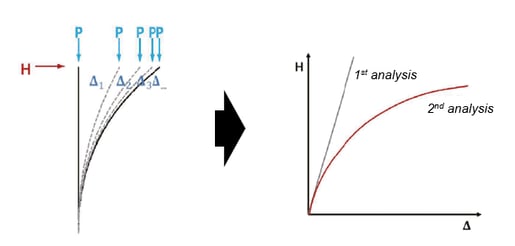
Looking at the design code(AISC) in relation to the 2nd-order analysis in DA and ELM, it is specified that any 2nd-order analysis method that can consider both P-δ and P-Δ can be used .
According to the characteristics of the structure, there are 3 ways for using 2nd order analysis methods.
Method 1 : Approximate 2nd-order analysis using coefficients B1 and B2,
Method 2 : P-δ effect is considered by applying the B1 coefficient, and the P-Δ is considered through 2nd-order analysis,
Method 3 : Directly considers P-δ and P-Δ by performing a geometric nonlinear analysis.
The approximate 2nd-order analysis is a method of amplifying the member force calculated through 1st-order analysis by applying the coefficients B1 and B2 to consider the P-δ and P-Δ effects, respectively. However, since the B2 coefficient calculation process requires a clear floor division, there is no other way to calculate it if there is no floor division. Therefore, the approximate 2nd-order analysis is a formal and suitable method only for buildings with orthogonal frames, and it is not easy to apply to irregular structures.
The general direct analysis method means the method according to method 2~3.
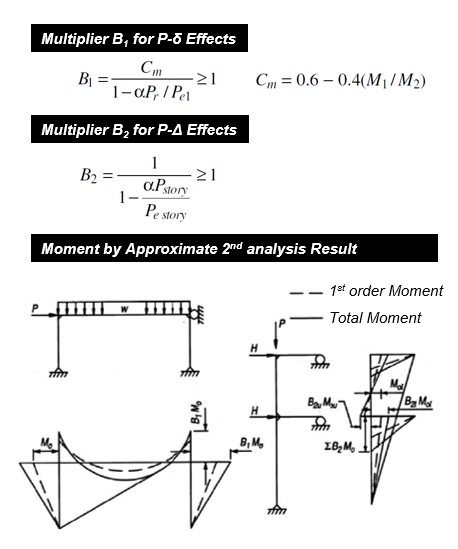
The usefulness of Direct Analysis Method
Why use the direct analysis method?
I a) It is the primary method in steel structure design.
I b) It is possible to apply to all types of structural systems.
I c) It can capture the internal structure forces more accurately.
i d) It is the correct design of beams and connections providing rotational column restraint.
e) No need to calculate K-factors.
I f) It is possible to apply for all side-sway amplification values (Δ2nd order / Δ1st order).
g) Effective length method is limited (ELM should be used when Δ2nd order / Δ1st order < 1.5.).
The usefulness of Direct Analysis Method
How to create the imperfection load in MidasGen
The procedure of creating imperfection loads in Midas Gen is as follows.
1) Step 1. Create a model of the lateral force resisting frame, including the leaning column.
2) Step 2. Reduce the stiffness of the lateral framing members in your model.
3) Step 3. Apply notional load or directly model the imperfections.
4) Step 4. Conduct a second-order analysis (“Rigorous” or B1-B2 amplification on first-order).
* Mesh compression elements to capture P-δ.
* “Rigorous” means to use geometric nonlinear analysis.
5) Step 5. Design members using AISC specification and K=1.0.
6) Step 6. Check lateral drift limits for wind and seismic under a unreduced stiffness.
1) Step 1. Create a model of the lateral force resisting frame, including the leaning column.
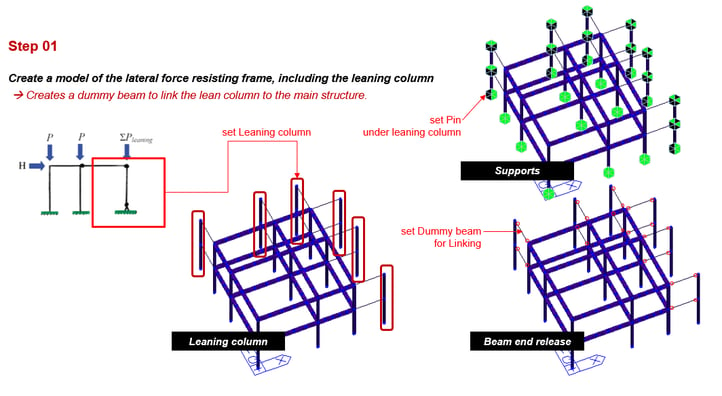
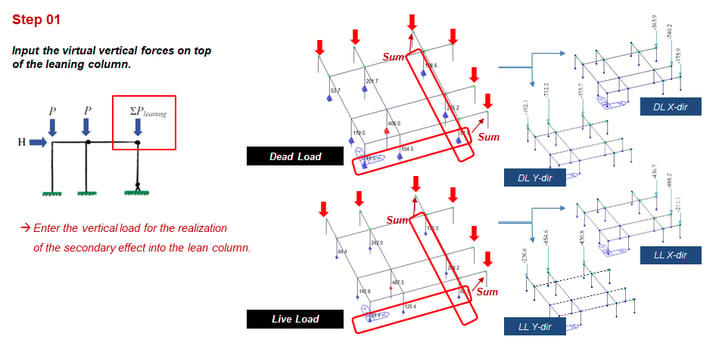 Figure 6. The design procedure of direct analysis in Midas Gen (Step 1)
Figure 6. The design procedure of direct analysis in Midas Gen (Step 1)2) Step 2. Reduce the stiffness of the lateral framing members in your model.
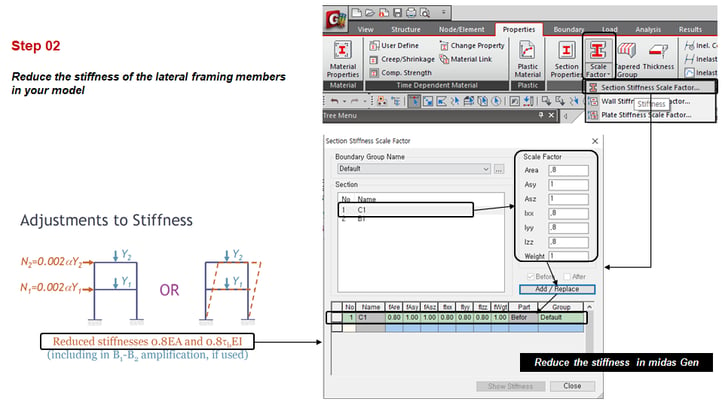
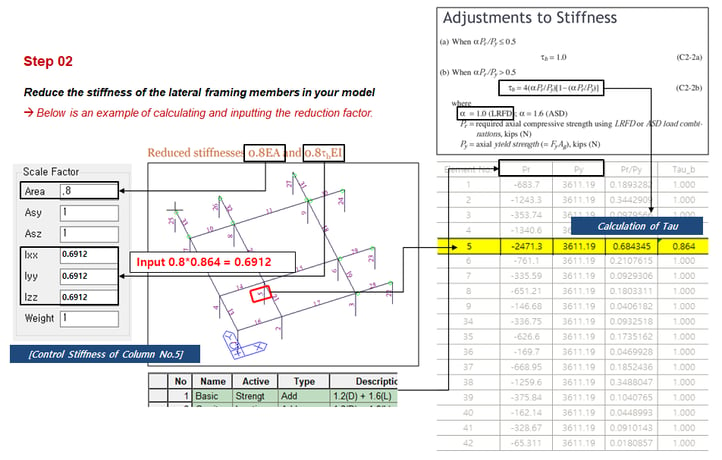
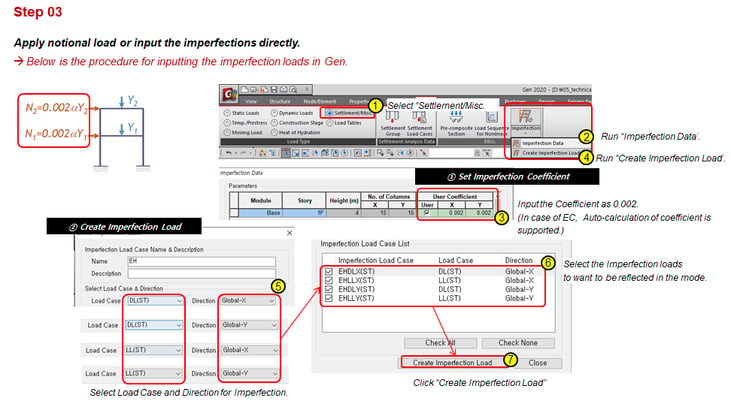
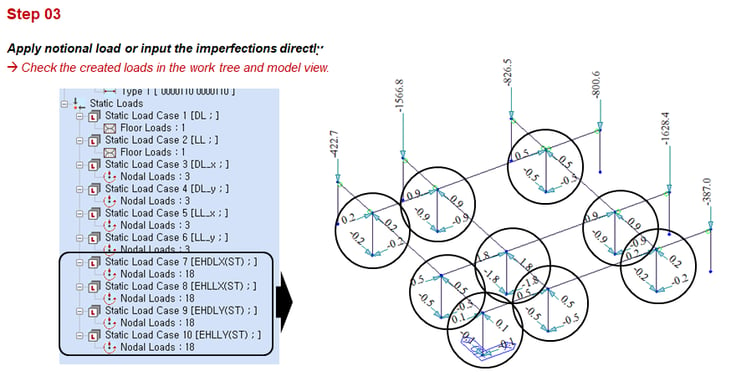
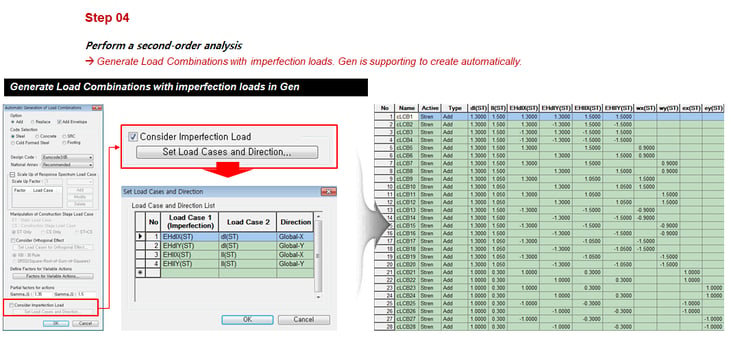
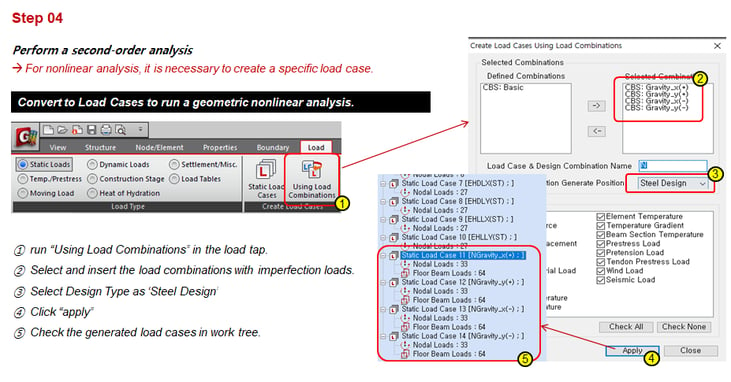
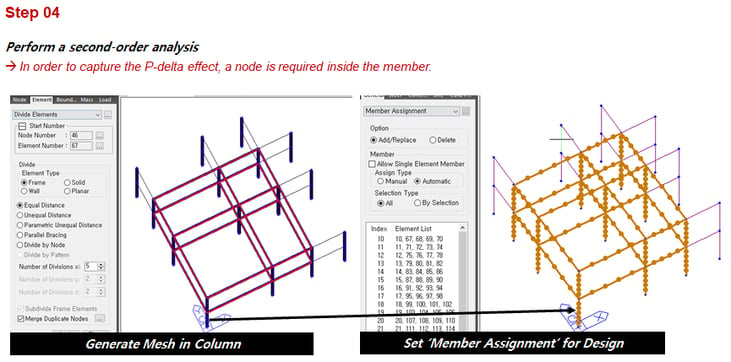
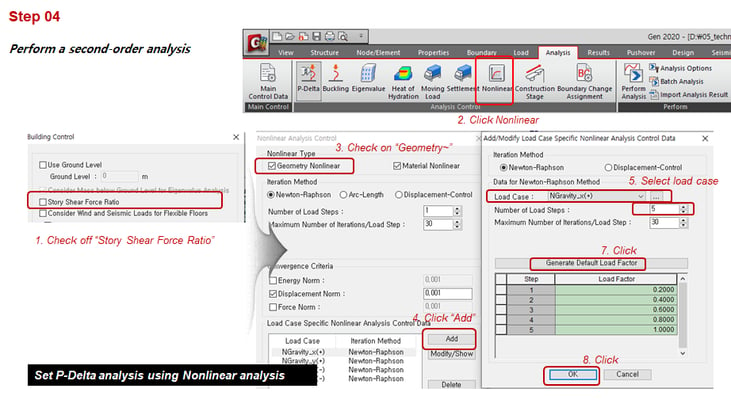
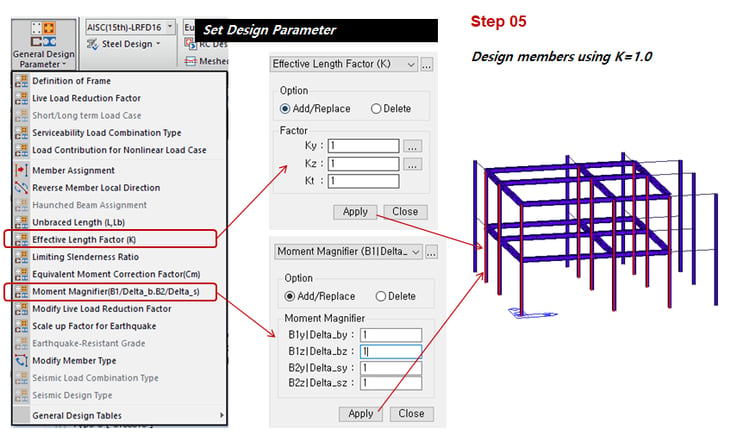
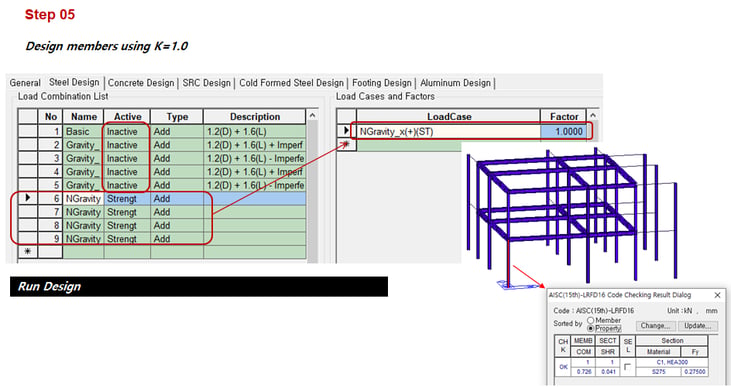
 Banner Title Products
Banner Title Products



